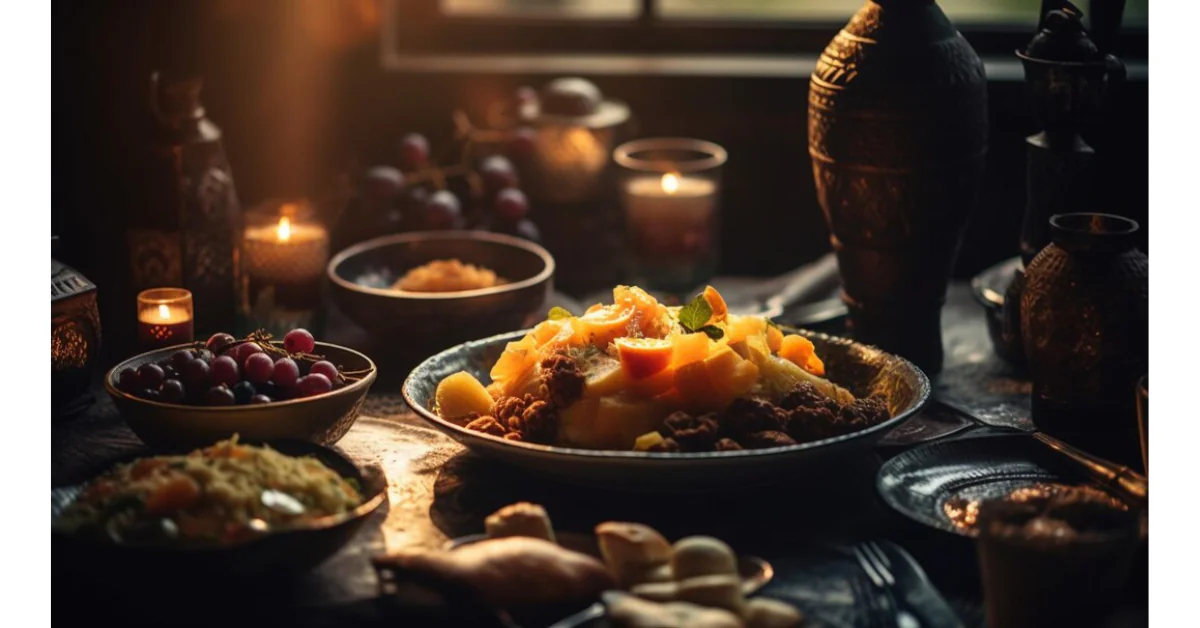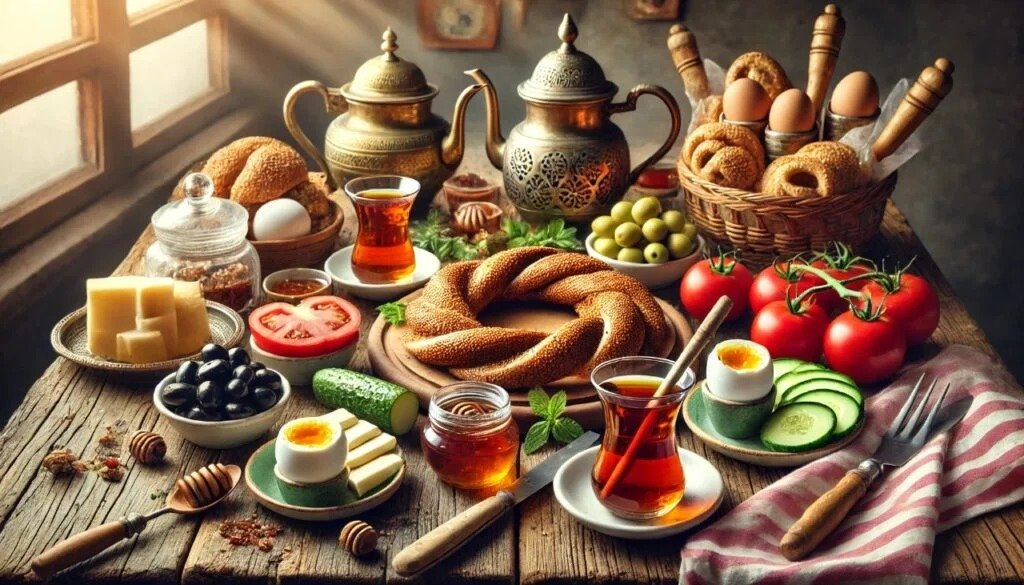Introduction to Çeciir
Çeciir, a term rich in cultural significance, has variations in its meanings and interpretations depending on the region and context in which it is used. Originally derived from Middle Eastern and Mediterranean traditions, çeciir refers to various practices, foods, and items that have become integral to the cultural landscape. Though its precise definition may vary, çeciir often encompasses aspects of culinary arts, community gatherings, and artisanal crafts that reflect the heritage and customs of a people.
In contemporary culture, çeciir has gained recognition beyond its traditional confines, leading to a resurgence of interest in authentic culinary practices and cultural celebrations associated with it. This term transcends geographical boundaries, connecting people through shared experiences, flavors, and customs. Today, as society continues to evolve and diversify, the appreciation for çeciir is more relevant than ever, inviting both culinary aficionados and cultural enthusiasts to explore its depths.
The importance of çeciir lies in its ability to foster connections within communities while preserving unique traditions that may otherwise fade away. The simple act of sharing a meal, participating in local festivals, or engaging in traditional crafts allows individuals to connect with their heritage and history. Moreover, çeciir exemplifies the way food can serve as a catalyst for storytelling and understanding among different cultures, emphasizing our shared human experience.
As we delve further into the intricacies of çeciir, this blog post will highlight its cultural significance and culinary delights, offering insights into its historical context and contemporary relevance. Readers can anticipate a journey through flavors, traditions, and the heart of communities that celebrate çeciir through various forms of expression. The exploration promises to showcase how this concept continues to thrive in today’s interconnected world.
The Historical Roots of Çeciir

Çeciir, a cherished staple in numerous culinary traditions, has a rich and complex historical background that reflects its cultural significance over time. The origins of çeciir can be traced back to ancient civilizations, with most sources pointing to the fertile regions of Anatolia, where this legume has been cultivated for thousands of years. Archaeological evidence highlights that çeciir was a crucial food source for early agricultural societies, contributing to their sustenance and economic stability.
As different empires rose and fell across the region, çeciir gained recognition and adapted based on various cultural influences. The legume spread through trade routes, eventually reaching new territories, including the Middle East and the Mediterranean. Through these exchanges, çeciir not only made its way into the diets of different nations but also inspired a variety of culinary techniques and recipes, showcasing the versatility of this ingredient.
The evolution of çeciir is equally tied to the significant cultural shifts of its time. For instance, during the Ottoman Empire, çeciir became an integral part of royal kitchens and traditional dishes, symbolizing prosperity and health. This period saw innovations in preparation methods, allowing for the incorporation of çeciir into diverse meals, elevating it beyond mere sustenance to a symbol of social status and culinary craftsmanship.
In contemporary society, çeciir retains its prominence within various cultures, reflecting a blend of historical significance and modern culinary creativity. Today, it is celebrated not only for its nutritional value but also for its role in traditional dishes and food festivals. The ongoing appreciation for çeciir highlights its importance as a cultural artifact, bridging the past with present culinary practices while continuing to adapt to changing societal trends.
Cultural Significance of Çeciir

Çeciir, a significant element in various communities, embodies a rich cultural heritage and identity. This versatile ingredient has transcended mere culinary use, evolving into a symbol of celebration and tradition among different societies. In many cultures, çeciir is embraced during rituals and festivals, where its preparation and consumption foster a sense of togetherness and continuity.
One of the most notable instances of çeciir’s cultural importance can be found in agricultural communities, where it is often perceived as a symbol of prosperity and sustenance. During harvest festivals, çeciir is prominently featured in traditional dishes, serving as a reminder of the hard work that goes into cultivating food. These gatherings often include storytelling, music, and dance, all centered around the shared enjoyment of foods that include çeciir, reinforcing communal bonds and shared identities.
In addition to festivals, several cultures have rituals that prominently feature çeciir as an integral part of their customs. For instance, in certain communities, çeciir porridge is offered during rites of passage, such as weddings and births. This practice symbolizes nourishment and well-wishes for the individuals involved and highlights the ingredient’s role as a significant marker in life’s milestones.
The preparation of çeciir-based dishes can also vary significantly from region to region, showcasing local culinary techniques and flavors. In this way, çeciir not only fulfills a nutritional role but also acts as a conduit for cultural expression and identity. Each dish tells a story, reflecting the unique customs and values held by the various communities that cherish çeciir. This depth of cultural significance emphasizes the ingredient’s vital place in the fabric of social life and its capacity to bring people together across generations.
Various Forms of Çeciir: An Overview

Çeciir, a staple in many culinary traditions, manifests in a striking array of forms that reflect the diverse cultural landscapes in which it is embraced. This adaptability is evident in the different interpretations of çeciir that vary from one region to another, each adaptation showcasing local customs and traditional practices.
In the Middle Eastern context, çeciir is often recognized in its base form, where it serves as a primary ingredient for hummus, a popular dip made from blended chickpeas. This dish emphasizes the creamy texture and nutritional value that çeciir contributes, making it a vital component in vegetarian and vegan diets. Similarly, in Mediterranean cuisines, çeciir appears in dishes like falafel, where ground chickpeas are deeply seasoned and fried, creating a crisp exterior while maintaining a tender, flavorful inside. These variations highlight çeciir’s versatility and its ability to absorb and enhance local flavors.
In regions like South Asia, çeciir takes on a different role, appearing in the form of lentils. Here, it is a common ingredient in dals, which are lentil-based stews, favored for their protein content and rich flavors. In this culinary interpretation, çeciir is often paired with aromatic spices, enriching the dish and showcasing the fusion of regional tastes.
Additionally, in East African cultures, çeciir features prominently in dishes such as stews and salads, where it is prepared with fresh vegetables and invigorating spices, embodying both nutritional and cultural significance. This demonstrates how çeciir can adapt to differing dietary preferences while retaining its essential qualities.
Overall, the various forms of çeciir exemplify its integral role across different cultures, offering a glimpse into the collective culinary identity shaped by local traditions. This rich tapestry of çeciir not only satisfies palates but also fosters a sense of community through shared culinary practices.
Çeciir in Art and Literature

Çeciir, a traditional dish with deep roots in various cultures, has served as a source of inspiration for numerous artists and writers throughout history. Artists have depicted çeciir in their paintings, sculptures, and other visual mediums, capturing its essence and the communal experiences surrounding its preparation and consumption. The vibrant colors and textures of the dish lend themselves to artistic interpretation, making çeciir a focal point in ways that explore themes of nourishment, tradition, and cultural heritage.
In many artistic works, çeciir symbolizes more than mere sustenance; it evokes feelings of nostalgia and belonging. Through portrayals of family gatherings centered around shared meals featuring çeciir, artists reflect the important role that food plays in forging connections among people. These representations often highlight the ritualistic aspects of food preparation, emphasizing the care and artistry involved in crafting this beloved dish. Such artistic interpretations contribute to a broader understanding of how çeciir intertwines with personal and collective identities.
Literature has similarly embraced çeciir, recognizing its significance within various narratives. Writers utilize this dish as a motif to convey cultural values, familial relationships, and the passing of traditions from one generation to the next. In stories and poems, references to çeciir illustrate not only the culinary aspects of life but also deeper emotional connections that characters form through shared meals. This literary treatment reaffirms çeciir’s status as a cultural emblem, bridging past and present while allowing readers to grasp the nuances of different societies.
Through artistic and literary expressions, çeciir transcends its identity as merely a meal, becoming a symbol of cultural richness and a testament to the human experience. The impact of çeciir on culture and individual perspectives resonates through these creative works, revealing its role as both inspiration and representation within the broader context of community and tradition.
The Culinary Aspects of Çeciir

Çeciir, a term that often refers to chickpeas, plays a significant role in various culinary practices, particularly in Middle Eastern and Mediterranean cuisines. This versatile legume is celebrated for its nutritional value, being rich in protein, fiber, and essential vitamins. Its adaptability makes it a popular ingredient in numerous dishes, ranging from salads to stews.
One traditional dish that highlights çeciir is hummus, which has gained international acclaim. Hummus is made by blending cooked chickpeas with tahini, garlic, olive oil, lemon juice, and spices. This creamy spread not only boasts a delightful flavor but also serves as a nutritious option for dips and spreads, underlining the cultural significance of çeciir in communal dining practices. Another popular dish is falafel, where ground chickpeas are mixed with herbs and spices, formed into balls, and then deep-fried. This crispy delight has become a staple street food and is often served in pita bread with various accompaniments, showcasing the beloved nature of çeciir in local food culture.
In addition to these well-known preparations, çeciir also finds its way into stews and soups. For example, a classic chickpea stew may include a combination of vegetables such as carrots, potatoes, and spinach, alongside appropriate seasonings. This dish exemplifies how çeciir is not only a core ingredient but acts as a focal point around which families gather, enriching the cultural fabric through shared meals. The inclusion of çeciir in various recipes underscores its importance, providing not only sustenance but also comfort and tradition.
Ultimately, the culinary aspects of çeciir are deeply intertwined with cultural practices, offering both nourishment and a means of preserving culinary heritage.
Modern Interpretations and Adaptations of Çeciir

In contemporary society, the traditional concept of çeciir has undergone various adaptations that reflect the cultural and culinary diversity of our time. Chefs are increasingly experimenting with çeciir, intertwining it with global culinary influences. For instance, some modern recipes incorporate çeciir into fusion dishes, blending traditional ingredients with contemporary techniques. This not only preserves the essence of çeciir but also introduces it to a wider audience who may be unfamiliar with its traditional roots.
Restaurants focusing on farm-to-table concepts have also embraced çeciir, often highlighting its regional origins and the stories behind its preparation. By sourcing local ingredients to complement çeciir, these establishments foster a connection between diners and the cultural heritage associated with this dish. Additionally, the push for sustainability in the culinary world has led to innovative ways of incorporating çeciir into plant-based diets, making it accessible to vegetarians and vegans, thereby broadening its appeal.
Beyond the culinary realm, artists and writers are finding inspiration in çeciir as well. Many contemporary works of art explore the themes of heritage and modernization, using çeciir as a metaphor for cultural identity. Writers often depict çeciir as a symbol of comfort and tradition in their narratives, bridging the gap between past and present experiences. This multifaceted exploration of çeciir highlights its enduring relevance in an ever-changing world.
Moreover, digital platforms have facilitated a global discourse around çeciir, allowing enthusiasts and creators to share their interpretations and adaptations. Social media, in particular, has become a vital space for showcasing inventive takes on this traditional dish, inspiring home cooks to experiment and reimagine çeciir in their own kitchens.
Challenges and Misconceptions about Çeciir

Çeciir, a traditional dish celebrated for its unique flavors and cultural significance, often encounters various misconceptions that can obscure its true essence. One of the primary challenges in preserving çeciir is the risk of cultural appropriation. As this dish garners attention beyond its traditional communities, there is a tendency for non-native chefs and food enthusiasts to experiment with its ingredients and preparation methods. While culinary creativity can be commendable, it can also lead to versions of çeciir that stray significantly from its authentic roots. This dilution of tradition not only impacts the dish itself but also contributes to a broader misunderstanding of its cultural importance.
Furthermore, the rise of globalization has contributed to the commercialization of çeciir, resulting in numerous variations that often neglect the historical and regional context of the dish. This commercialization has the potential to misrepresent çeciir as a mere trendy food item rather than a cherished cultural heritage. Authentic representation of çeciir is imperative, as it reflects the rich culinary traditions and stories of the communities that create it. Preserving these narratives requires awareness and mindfulness among those who promote and consume çeciir outside its cultural boundaries.
Another common misconception involves the preparation of çeciir, where individuals may believe that a few ingredients can recreate this complex dish. In reality, çeciir is a culmination of various techniques, flavors, and community practices that have been honed over generations. Each region may have its distinct approach, which contributes to the dish’s diversity. Therefore, it is essential to approach çeciir with respect and understanding, recognizing that it represents more than just food; it symbolizes a living cultural heritage that deserves preservation and appreciation.
Conclusion
Throughout this exploration of çeciir, we have uncovered its rich cultural significance and culinary delights. As a symbol of heritage, çeciir encapsulates the traditions and practices of communities that have thrived around this extraordinary food. The unique preparation methods, regional variations, and the stories connected to çeciir not only reflect the rich tapestry of cultural identity but also highlight the importance of food in uniting people.
Importantly, çeciir serves as a medium through which customs and values can be passed down from one generation to another. It is crucial to recognize that the act of preserving çeciir transcends mere consumption. It involves actively engaging with the historical narratives it embodies and the communal practices it fosters. As we engage with çeciir, we are reminded of the interconnectedness of our culinary experiences, inviting us to appreciate not only the taste but also the stories woven into each bite.
Moreover, cherishing çeciir in our modern lives encourages a sustainable approach to culture and cuisine, allowing us to explore and appreciate local ingredients traditionally used in its preparation. This not only supports local agriculture but also ensures that future generations will have the opportunity to enjoy and learn from the diversity that çeciir has to offer. Thus, as we move forward, it is essential to advocate for the preservation of çeciir and encourage others to embrace its legacy.
In conclusion, cherishing çeciir goes beyond mere appreciation of its flavors; it invites us to engage deeply with our cultural roots. Let us celebrate this culinary marvel and foster an environment where çeciir can flourish for generations to come, ensuring that its stories, flavors, and traditions are well-preserved and enjoyed by all.







